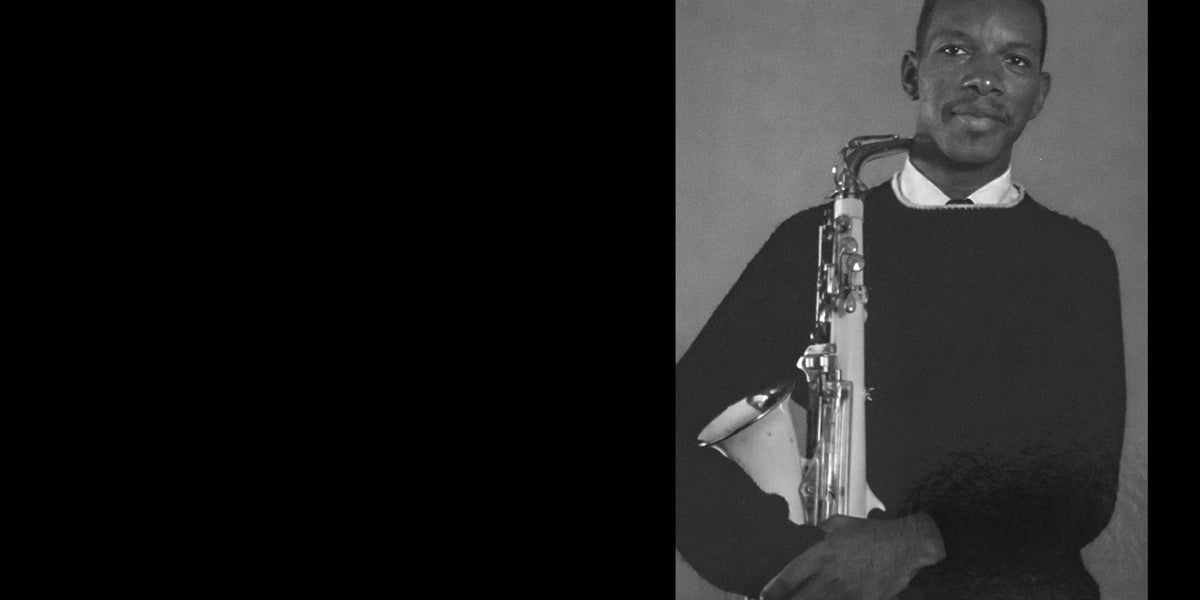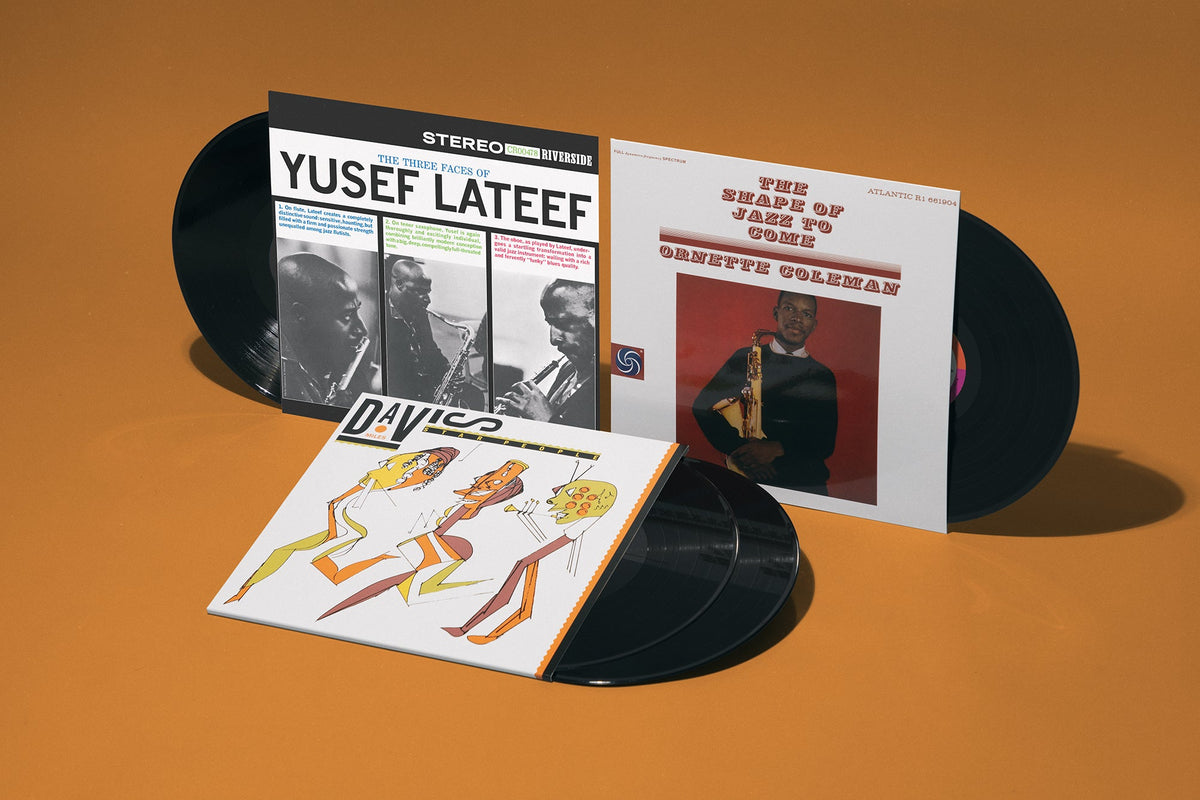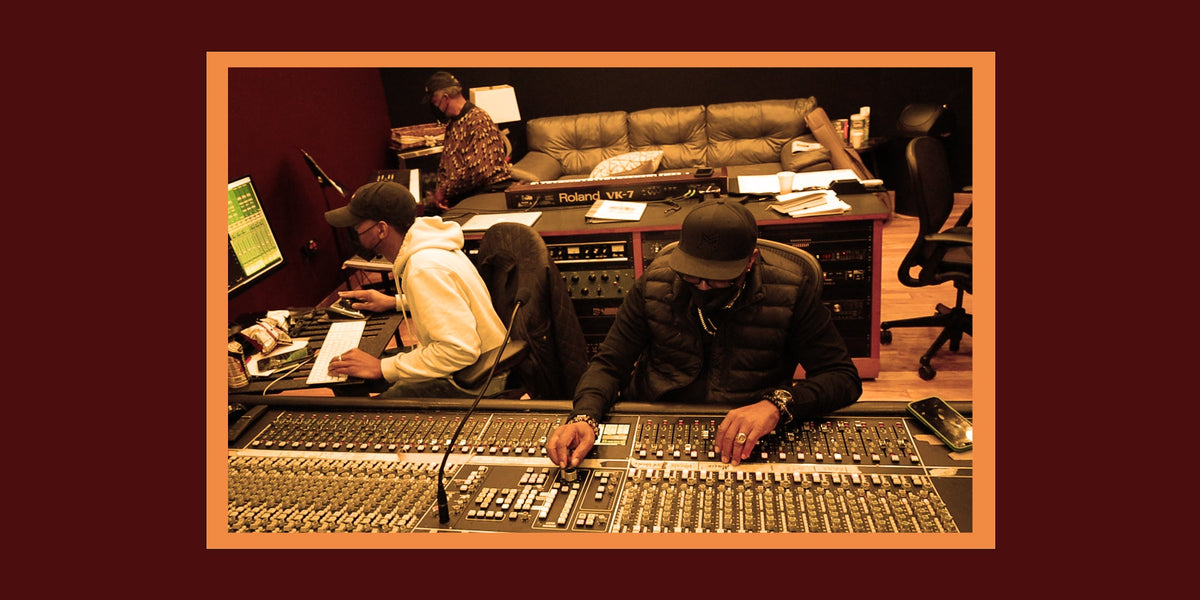I don’t care what anyone says, the more obscure jazz artists you know about, the cooler you are. Jazz has made a comeback in recent years, so having a basic knowledge of the major players is key to your social reputation (if you’re hanging out with the right people, that is). If you really want to separate yourself, it’s time to get to know some avant-garde jazz artists.
This isn’t a be-all-end-all list, but it considers players of different eras and will give you a good basis to jump-start your exploration into the world of weird jazz. Pick up all these albums on vinyl, check the liner notes, and buy more from all the side musicians while you’re at it. All these artists broke free from the confines of what jazz was “supposed” to be and forged ahead on their own path.
Here are 10 essential avant-garde jazz albums you need to own:

Albert Ayler Trio: Spiritual Unity
Sonny Murray, the drummer on this album, was one of the first to break away from timekeeping to a playing style that was absent of constraints, which allowed freedom for soloists. Along with master bassist, Gary Peacock, they create a wide-open field in which Ayler can run in any direction. Ayler’s sax playing is a prime example of what makes music work. His message is more than the sum of the notes played; it’s his soul that seeps through the horn. His melodies are simple, yet they convey a complexity of the emotions in each note. Even though Ayler died young (under mysterious circumstances), his output boasts a mature and confident sound that usually takes decades to obtain. Spiritual Unity remains a classic album and a must-have for anyone interested in avant-garde jazz.

Sun Ra: Heliocentric Worlds
This album creeps up on you. It begins sparsely and slowly builds to a madness that could only come from the mind of Sun Ra. The juxtaposition of solo instruments with sections of complete chaos not only keep this album entertaining, but unfold new and unexpected connections with each listen. There is so much happening at once that you need to choose a thread—be that a saxophone, bass, or the piano—and follow it throughout the improvisations. The way that each thread interacts with all the others is where the magic of this LP lies. Sun Ra is an otherworldly figure in that he seems to be omniscient, understanding these associations as they occurred in real time. Though his catalogue is expansive, Heliocentric Worlds stands as an essential landmark to navigate through his material.

Don Cherry: Complete Communion
This LP features two suites, “Complete Communion” and “Elephantasy,” each comprising one side. Compositionally, Cherry shines with interesting, fun, and singable melodies. His written parts accentuate the individual voice of each musician in the group: Gato Barbieri, Henry Grimes, and Ed Blackwell. The way that these instrumentalists play off each other should be the standard for which musicians all aspire. With no chordal instrument, the background melodies become integral to the shaping of the solos. These melodies float into perfect transitions between soloists and compositional sections. One of the most striking parts of this recording is how in sync Henry Grimes and Ed Blackwell are. They sound as though they are one musician, changing feels, times, and dynamics effortlessly. This is essential listening for hearing how to push the bounds of jazz without losing accessibility.

Cecil Taylor: Unit Structures
Much has been written about how this music was composed, notated, and navigated by the band, so I am not going to delve into that (unless you want to be scrolling for days). If you take away the cultural impact for jazz and the new concepts for composition, what’s left is a supremely entertaining album. There is a unique approach to silence and space represented through this recording. To me, the periods where musicians sit out are as important as when they are playing. The tension built from this silence is released when the musicians play, which in avant-garde and free jazz recordings is the opposite of the norm.
Andrew Cyrille has such a light touch with his drumming as he always supports and never overtakes the other musicians. Henry Grimes is one of the bassists on this album, giving him two landmark recordings in the same year (this and Complete Communion). His story is an interesting one, with three decades away from music mid-career, but he is back on the scene today being productive as ever. Unit Structures is a snapshot of a period when jazz was beginning to be molded into something new, and it is a must-have for any vinyl enthusiast.

Art Ensemble of Chicago: Les Stances a Sophie
What happens when you mix free jazz, funk, and R&B? You get Les Stances a Sophie. What Art Ensemble of Chicago does better than almost anyone else is to sound like they are having fun. Throughout all their albums and live performances, there’s always an element of joy—no matter how complicated the material gets. Roscoe Mitchell and friends use interesting combinations of instruments, styles, and vocals to convey their message. With horns, whistles, bells, and chanting, Art Ensemble of Chicago keeps you guessing as to what will come next, and how it will fit. They seamlessly blend styles and thereby created their own distinct sound. This record pushed them to the forefront of the avant-garde jazz scene and cemented them on the list of most influential artists in jazz.

Ornette Coleman: Science Fiction
Ornette is known for pushing the bounds of jazz and this album continues that tradition. At this point in his career, Ornette had already released Tomorrow is the Question, Shape of Jazz to Come, and Something Else! and could have coasted. But he didn’t. Just like the Art Ensemble album, this one combines elements of funk and R&B with free jazz. Science Fiction even features poetry, a baby crying, and what sounds like the bass of Charlie Haden through effects pedals. The album captures a transitional time for Coleman to a more electrified sound. Albums that represent a shift in sound and direction often sound the freshest. This characteristic comes from the musicians’ uncertainty of the final sound that they are working towards. They have to trust that they will arrive where they want to and along the way, these transitory albums allow us to take part in the ride. Science Fiction is revered by musicians and was recently covered by the Bad Plus featuring Tim Berne, who is featured later on this list.

Dave Holland: Conference of the Birds
The playing from all the musicians is superb: Anthony Braxton, Dave Holland, Sam Rivers, and Barry Altschul blend together perfectly to create a unique and incredibly entertaining album that still surprises after multiple listens. There is no chordal instrument so the band is free to move harmonically without restriction. All the melodies get stuck in your ear and the solos contain a kind of telepathy that is very rarely heard. Barry Altschul moves freely through an expanded drum set that includes percussion and a marimba while Dave Holland holds down some of the sickest grooves of all time (with and without time signatures). Braxton is a monster player and composer, and many of his albums were considered for this list as well. That leaves Sam Rivers, whose creativity in crafting lines keeps you guessing the entire album. Altogether, this is an all-star band and a classic record.

Carla Bley and Charlie Haden: Ballad of the Fallen
Carla Bley and Charlie Haden are two of the biggest names in avant-garde jazz. Through many years and multiple collaborations, these two have been injecting interesting influences into jazz music. And on this particular album, they integrated Spanish and Latin influences. Carla Bley’s arrangements are beautiful throughout both sides, and the playing from the musicians is totally relaxed. The Liberation Music Orchestra, which was the full name of the group that put out this album, was Charlie Haden’s brainchild. He created the group around the time of the Vietnam War as a way to speak for the oppressed. This album, Ballad of the Fallen, was a commentary on the Spanish Civil War as well as the US getting tangled up in Latin America. Listening through this context brings so much substance to the surface because you can hear the frustration in the music. Though there are many heavy players on this album, Mick Goodrick on guitar and Paul Motian on drums stand out. They both have such a recognizable individual style, but they bend it to perfectly fit within the arrangements and mood of the pieces.

Tim Berne: Fulton Street Maul
As far as truly original current composers in the jazz realm go, there is no equal to Tim Berne. This album may be more than 30 years old, but it’s just as fresh and exciting today. Berne has a way of twisting the expected and creating something innovative and interesting. He switched out a bassist for a cellist (Hank Roberts), and rounded out the ensemble with Bill Frisell and Alex Cline. The songs are at times beautiful and at others full of angst. Tim Berne composes and plays saxophone with complex rhythms and overlapping lines that shouldn’t work, but do. Underneath whatever melody is happening, there is always another line that is just as interesting bubbling beneath. This album is brimming with confidence in the playing and some of the solos are truly original. Listen to Frisell’s solo on “Federico”! The cover sets the tone for the music within, a great abstract painting by Stephen Byram, who has done many Berne album covers. Tim’s newer albums are all worthy of a listen, though I don’t believe many of them have been released on vinyl.

John Zorn: Naked City
Zorn’s body of work is breathtaking in its’ breadth. His albums span from straight-ahead jazz to noise to classical chamber compositions to everything in between. Naked City belongs to the in-between category. Songs like “N.Y. Flat Top Box” seamlessly jump genres every few seconds. Seriously—every few seconds! Somehow, though, it all works. This album would be the soundtrack to a film noir from hell; it jumps from moments of relaxation to pure aggression and anger, ranging from laid-back swing to grindcore to bluegrass. It’s a full assault on what your ears are expecting. The band is full of some very heavy hitters: John Zorn, Bill Frisell, Fred Frith, Joey Baron, Wayne Horvitz, and Yamatsuka Eye. Although known as a guitarist whose own recordings almost made this list, Frith takes on the bass here, and absolutely slays it. Listening to all the twists and turns in the music and the tightness of the musicians, I can’t imagine the amount of rehearsal involved. This record needs to be in your collection.
Ryan Kowal is a vibraphonist, percussionist, and composer living in Providence, RI. He loves exploring new music, especially on vinyl, and sharing it with others. His weekly vinyl blog, as well as recordings and videos of performances, can be found at his website.
Related Articles
Join the Club!
Join Now, Starting at $36Pages







